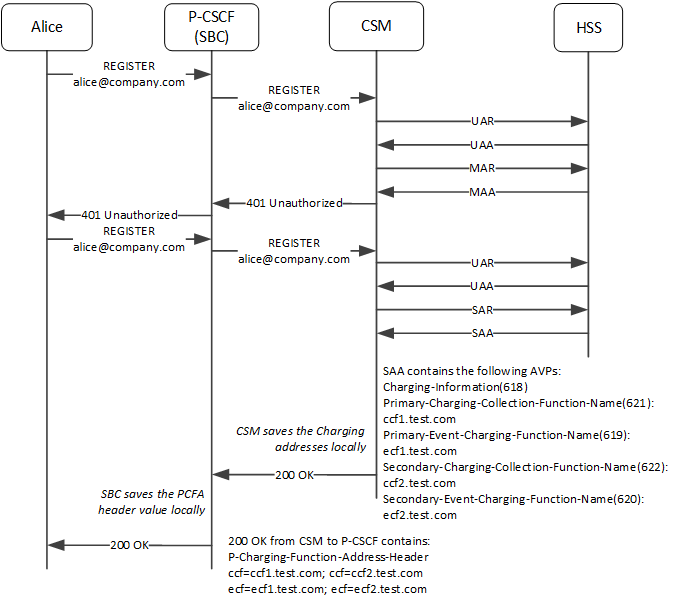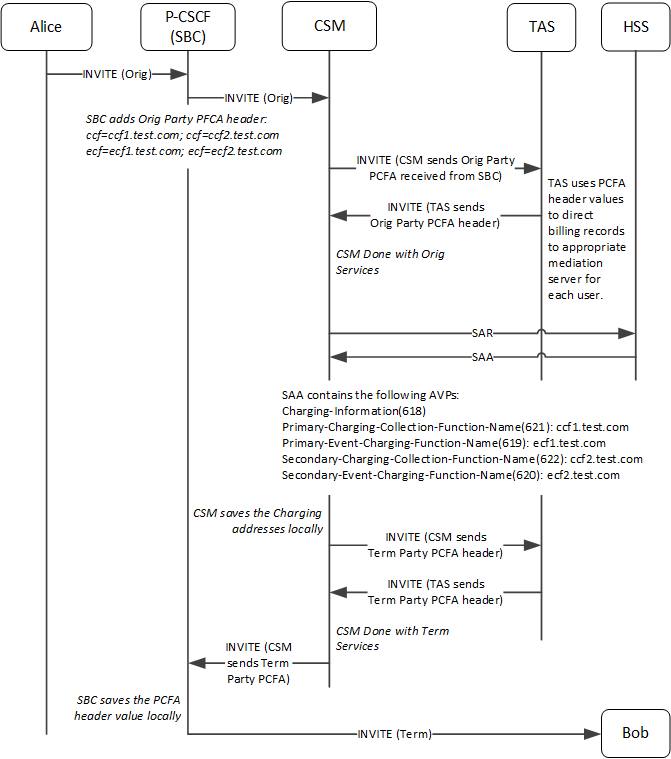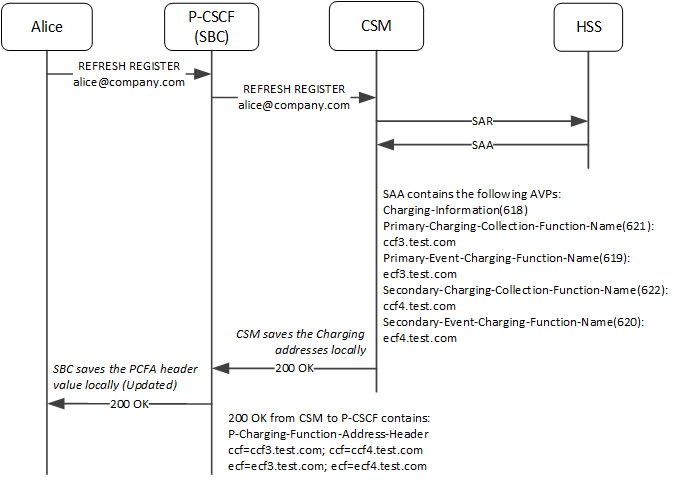Call Flows for HSS-Based PCFA
This section presents key call flows that depict the OCCSM handling REGISTER and INVITE methods while configured for this HSS-based PFCA feature.
Simple Register
During registration, the OCCSM decodes the Charging-Information Grouped AVP and saves the primary and/or secondary ccf /ecf addresses it receives from the HSS an in SAA over the Cx interface. The OCCSM uses these addresses to populate the outgoing P-Charging-Function-Address header in the 200 OK response of the REGISTER message it sends to the P-CSCF (SBC).

INVITE with Registered Orig and Term
In this example, the OCCSM handles an INVITE from a registered caller (Orig party) to a registered receiver (Term party). The P-CSCF, which could be an SBC, adds the PCFA header for the Orig Party with the charging addresses obtained during registration. Here, the OCCSM forwards the PCFA header it receives in the INVITE from the P-CSCF to the TAS server. After completing origination services, the OCCSM adds the Term Party's PCFA header, which includes the charging addresses saved during Term Party registration. The TAS server can then use this information for user billing purposes.

INVITE with Registered Orig and Unregistered Term
This next example expands upon the INVITE scenario by introducing an Unregistered Term Party. Again the P-CSCF adds the PCFA header for the Orig Party with the charging addresses. The OCCSM forwards the PCFA header received in the INVITE to the TAS server. After completing origination services, the OCCSM performs the SAR/SAA exchange, which provides the PCFA for the unregistered Term party and saves these locally. The OCCSM uses these charging address values to populate the PCFA header for the Term Party. The TAS server can then use this information for user billing purposes.

Refresh Register Scenario
If you upgrade your OCCSM from S-Cz8.4.5 to S-Cz9.1.5, or you enable the feature after the system has been operational, the OCCSM would receive the updated CCF/ECF addresses after a refresh register, wherein the SAR/SAA happens for the existing users.
